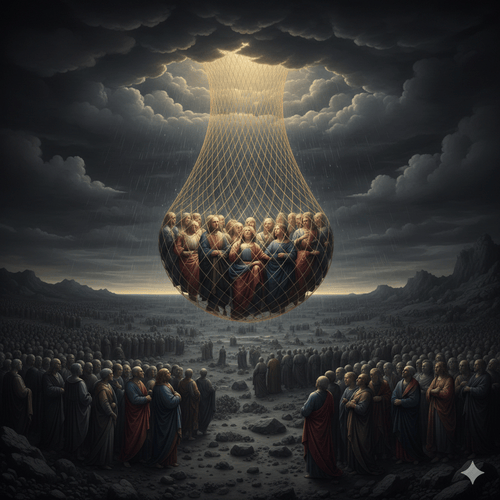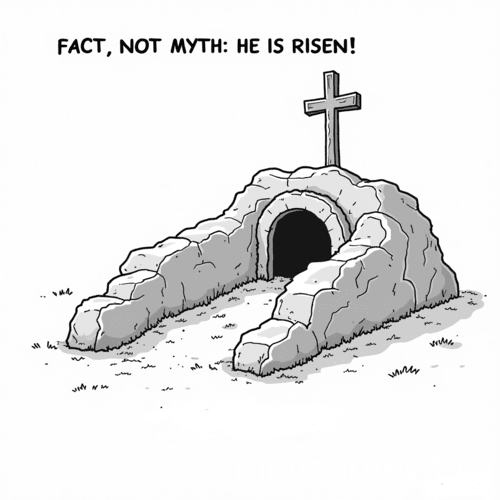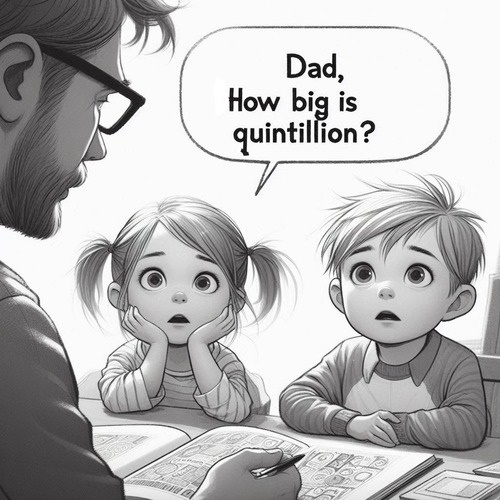Is Jesus’ Resurrection Copied from Pagan Myths? Truth vs. Lies
In our ongoing series “Satan’s Lies: Common Deceptions in the Church Today,” we confront a particularly insidious claim: that Jesus’ resurrection was copied from pagan myths…
This deception attempts to undermine the very foundation of our faith by suggesting the central event of Christianity is nothing more than a recycled myth. This post critically examines this lie, providing clarity on why the resurrection of Jesus is unique, rooted in history, and unparalleled by any ancient myth.
The Deception Unveiled
Satan, the father of lies, has long sought to discredit the reality of Christ’s resurrection. By drawing false parallels between Jesus and pagan deities, this deception aims to cast doubt on the uniqueness and historicity of our Lord’s triumph over death. It’s a clever ploy designed to shake the faith of believers and deter seekers from embracing the truth of the Gospel.
Understanding Pagan Resurrection Myths
Proponents of this view often point to figures from ancient mythology such as Osiris, Adonis, and Dionysus, claiming their stories of death and rebirth prefigure and invalidate the account of Jesus’ resurrection. At first glance, some similarities may seem apparent, but a closer examination reveals crucial differences.
In many ancient cultures, myths about gods who die and return to life were often tied to the cycles of nature, particularly fertility and agriculture. For example:
- Osiris (Egyptian): After being killed by his brother, Osiris was brought back to life in a symbolic way, governing the underworld.
- Adonis (Greek): A vegetation god who dies and is revived, representing the seasonal cycles of life and death.
- Mithras (Roman): A god often linked to death and rebirth, though his “resurrection” is highly speculative.
These stories, while involving “resurrection-like” motifs, are largely symbolic. They reflect cyclical themes of death and renewal tied to nature, not historical, physical events. They are also markedly different in purpose and theology from the resurrection of Jesus.
The Unique Nature of Jesus’ Resurrection
- Bodily Resurrection: Unlike the spiritual survival or metaphorical rebirth found in pagan myths, Jesus’ resurrection was a physical reality. The Gospels emphasise Jesus rose in a glorified physical body, capable of eating, drinking, and being touched. It’s a profound act of God in human history, defeating sin and death (Romans 6:9-10). Pagan myths often depict gods who die and return cyclically, reflecting the seasons or the natural world. In contrast, Jesus’ resurrection is a one-time, definitive event that secures eternal life for believers (1 Corinthians 15:20-22). The bodily resurrection affirms the goodness of God’s physical creation and points to the future resurrection promised to believers. It stands in stark contrast to Greek philosophical notions of the body as a prison for the soul or Eastern concepts of escaping the physical realm.
- Historical Context and Eyewitness Testimony: Unlike pagan myths, the resurrection of Jesus is grounded in verifiable history. The New Testament writers go to great lengths to emphasise Jesus’ resurrection was not a vague, symbolic idea but a real, bodily resurrection. The apostle Paul, in 1 Corinthians 15:3-8, lists multiple eyewitnesses who saw the risen Jesus, including over 500 people at one time. This appeal to eyewitness testimony is critical because it anchors the resurrection in history, not myth.
- Early Christian Writings: The New Testament documents, particularly the Gospels and Pauline epistles, provide early and consistent attestation to the resurrection. Written within decades of the events they describe, these texts preserve eyewitness accounts and early Christian traditions about the risen Christ. The creedal statement in 1 Corinthians 15, dated to within a few years of Jesus’ death, demonstrates that belief in the resurrection was central to Christian faith from its inception, not a later legendary development.
- Transformed Lives of the Disciples: The dramatic transformation of Jesus’ followers presents a powerful argument for the reality of the resurrection. These folks, who fled in fear at Jesus’ arrest, suddenly became bold proclaimers of His resurrection, willing to face persecution and death for their beliefs. This radical change in behaviour, especially in a culture hostile to the idea of a crucified Messiah, is best explained by their genuine encounters with the risen Christ. The conversion of sceptics like James (Jesus’ brother) and Paul further strengthens this evidence.
- Growth of the Church: The rapid spread of Christianity in the face of severe opposition provides indirect evidence for the power of the resurrection message. Despite persecution from both Jewish and Roman authorities, the early church grew exponentially. This growth occurred in the very city where Jesus was crucified and buried, where any fraudulent claim could have been easily disproven. The willingness of early Christians to suffer for their faith, coupled with the inability of opponents to produce Jesus’ body or offer a compelling alternative explanation, strongly suggests that the resurrection was a real, transformative event.
- Eschatological Impact: Jesus’ resurrection was not merely a personal event but a cosmic one with far-reaching implications. It signalled the inauguration of God’s kingdom on earth and the beginning of the new creation promised in Scripture. This event marked the turning point of history, where God’s future broke into the present. The resurrection of Christ serves as the firstfruits of the general resurrection to come, providing a solid foundation for the Christian hope of eternal life and the ultimate renewal of all things.
This deception that tries to equate the resurrection of Christ with pagan myths is an attempt to undermine the central hope of Christianity. By presenting the resurrection as “just another myth,” Satan seeks to rob the church of the reality of Christ’s victory over death and the hope of eternal life.
Is Jesus’ Resurrection Copied from Pagan Myths? Responding to the Lie
Chronological Discrepancies: One significant flaw in the argument that Jesus’ resurrection was copied from pagan myths is the chronological timeline. Many of the alleged parallels—such as the “resurrection” of Mithras—post-date Christianity. Some of the myths often cited as “parallels” only developed in the centuries after Jesus’ death and resurrection, influenced by the spread of Christianity itself.
The idea that the resurrection narrative borrowed from pre-existing pagan stories lacks credible historical evidence. In fact, no pagan myths describe a god rising bodily from the dead in a manner comparable to Jesus.
Cultural and Religious Context: It’s also important to remember Jesus and His early followers were Jewish. Judaism strictly forbids the worship of other gods and is deeply hostile to paganism. The idea that first-century Jewish Christians would borrow from pagan myths, particularly ones steeped in polytheism and idolatry, is far-fetched. Instead, the resurrection narrative fits within the Jewish framework of bodily resurrection, as seen in Daniel 12:2 and other Old Testament references.
Theological and Scholarly Responses
- Early Church Defences: This deception is not new. In the second century, early Christians like Justin Martyr faced similar accusations that Jesus’ resurrection was merely a copy of older pagan stories. In his writings, Justin Martyr defended the historical nature of Jesus’ resurrection and pointed out that, even if there were similarities, Satan had sown counterfeits ahead of time to deceive people.
- Modern Scholarship: Modern historians and scholars have largely rejected the idea that Christianity borrowed its resurrection narrative from paganism. Serious scholarship recognises that the Christian account of resurrection is unique, historically grounded, and unmatched by any comparable mythology. Even scholars critical of Christianity acknowledge the profound differences between the resurrection of Jesus and the myths of ancient religions.
The Power of the Resurrection
Ultimately, the claim that Jesus’ resurrection is borrowed from pagan myths is a lie intended to discredit the truth. Jesus’ resurrection is the ultimate demonstration of God’s power over sin and death. It’s the very foundation of our hope (Romans 1:4), not a recycled myth but a historical, world-changing event that transformed the lives of the disciples and continues to change lives today.
Is Jesus’ Resurrection Copied from Pagan Myths? Debunking Satan’s Lie
The notion that Jesus’ resurrection is copied from pagan mythology is one of the many deceptions Satan uses to cast doubt on the Christian faith. By equating the resurrection with myth, this lie attempts to undermine the very foundation of Christianity. However, as we have seen, Jesus’ resurrection is a unique, historical event that stands apart from any pagan parallels.
This lie has been thoroughly debunked by history, scholarship, and the distinct theological message of Christianity. The resurrection is not just a myth or symbol—it is the glorious reality that Jesus has conquered death and offers eternal life to all who believe in Him.
As Christians, we must be vigilant in recognising and refuting these deceptions, standing firm in the truth of the resurrection. In this, we proclaim boldly: Jesus is risen indeed!
Is Jesus’ Resurrection Copied from Pagan Myths? Read Related FAQs
- What are the alleged similarities between Jesus’ resurrection and the myth of Osiris? Some claim similarities include both being killed and restored to life, associated with eternal life, and called “Lord of Lords.” However, crucial differences exist: Osiris remained in the underworld, while Jesus returned to earth; Osiris’ “resurrection” was more a reanimation for the afterlife, not a bodily resurrection; and the Osiris myth is cyclical, representing seasonal changes, unlike Jesus’ one-time resurrection. These distinctions highlight the unique nature of Jesus’ resurrection in contrast to the Osiris myth.
- How does the story of Mithras compare to Jesus’ resurrection? Claimed similarities include both allegedly being born on December 25, having followers called “brothers,” and ascending to heaven. However, key differences are that there’s no clear account of Mithras dying and rising again, and Mithraism post-dates Christianity in the Roman Empire. Moreover, Mithraism was a mystery cult with little historical documentation, unlike Christianity, which has extensive early historical records.
- What parallels are drawn between Adonis and Jesus? Alleged similarities include both being said to have died and been restored to life, associated with virgin births, and their deaths being mourned by women. Important distinctions are that Adonis’ “resurrection” was an annual event symbolising crop cycles, the Adonis cult lacked the ethical teachings central to Christianity, and there’s no evidence of Adonis being considered a saviour figure or offering eternal life. These differences underscore the unique theological significance of Jesus’ resurrection.
- When did arguments about gospel writers copying from pagan myths first surface? While some ancient critics of Christianity drew parallels with pagan religions, the specific argument that the gospel writers copied from pagan myths gained prominence in the late 19th and early 20th centuries. Scholars like James Frazer in “The Golden Bough” (1890) and the Christ Myth theorists of the early 1900s popularised these ideas. However, these theories have been largely discredited by modern scholarship due to their reliance on superficial similarities and disregard for historical and cultural contexts.
- How do scholars explain the similarities between Jesus’ resurrection and pagan myths? Modern scholars generally explain these similarities through common human experiences and questions about life and death, as well as cultural cross-pollination in the ancient Mediterranean world. They note that many alleged parallels are superficial and break down under closer examination. Some scholars also suggest that later pagan myths may have borrowed elements from Christianity, rather than vice versa, given the rapid spread and influence of early Christianity.
- How does the historical evidence for Jesus’ resurrection compare to that of pagan myths? The historical evidence for Jesus’ resurrection is significantly stronger than that for pagan myths. The Gospels provide multiple, early accounts based on eyewitness testimony, and the resurrection was proclaimed in the same time and place it allegedly occurred. Early Christians were willing to die for this belief, and there’s archaeological evidence supporting the New Testament narrative. In contrast, pagan myths typically lack this level of historical attestation and often evolved over centuries, making them less historically reliable.
- Couldn’t the apostle Paul have borrowed the concept of resurrection from Greek philosophy? No, Paul’s concept of resurrection was fundamentally different from Greek ideas. Greeks generally believed in the immortality of the soul, not bodily resurrection. Paul’s teaching of bodily resurrection was rooted in Jewish beliefs and his encounter with the risen Jesus, not Greek philosophy.
- How does the historical evidence for Jesus’ resurrection compare to that of pagan myths? The historical evidence for Jesus’ resurrection is significantly stronger. The Gospels provide multiple, early accounts based on eyewitness testimony. The resurrection was proclaimed in the same time and place it allegedly occurred. Early Christians were willing to die for this belief. There’s archaeological evidence supporting the New Testament narrative. Pagan myths typically lack this level of historical attestation and often evolved over centuries.
Is Jesus’ Resurrection Copied from Pagan Myths? Our Related Posts
Editor's Pick

Why Do People Hate the Doctrine of Election?
…WHEN THEY REALLY SHOULDN’T Few Bible doctrines provoke stronger reactions than election. The idea that God chose some for salvation [...]

The Doctrine of Providence: Does God Really Govern All Things?
You’re sitting in the doctor’s office when the diagnosis lands like a thunderclap. Your mind races: Why this? Why now? [...]

No Decay, No Defeat: What It Means That Christ’s Body Saw No Corruption
On the Day of Pentecost, Peter stood before thousands and made a startling claim: David's body decayed in the tomb, [...]
SUPPORT US:
Feel the Holy Spirit's gentle nudge to partner with us?
Donate Online:
Account Name: TRUTHS TO DIE FOR FOUNDATION
Account Number: 10243565459
Bank IFSC: IDFB0043391
Bank Name: IDFC FIRST BANK






